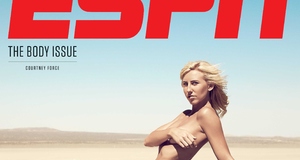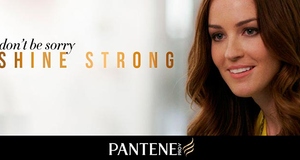From Elon Journal of Undergraduate Research in Communications VOL. 4 NO. 2Testing the Appeals of Feminist Ideologies in Female Athletic AdvertisingV. ConclusionThe relationships found during this study emerged from an open round of coding. They were not discovered through a priori inquiry, but instead, revealed themselves. The responses from the focus group ultimately demonstrated that one ad, or feminist ideology for that matter, does not fit all. There are different athletic lifestyles among Generation Y female athletes, each with their own feminist values. The lower-impact athletes – the yogis, intermediate runners, and cardio-intensive gym goers, for example – preferred the ads that portrayed active lifestyles but still appealed to their feminine characteristics, as in the highly favored "Thunder Thighs." For this reason, it can be said that low-impact athletes favor ads that evoke a third-wave feminist ideology. These respondents found the ads that depicted more intense, masculine versions of women intimidating. On the contrary, the higher-impact athletes – the sport-intensive and cross-training-oriented females – preferred them, aligning their preferences with ads promoting second-wave feminist ideology. These differences indicate that each lifestyle has its own athletic values that guide its members' ideology preferences and ad responses. Lower-impact athletes value an active lifestyle over straight athleticism. They mostly engage in exercise of some form to stay fit and maintain a good figure. These women appreciate athletic ads that maintain a balance in promoting fitness and appealing to their femininity. They are empowered by ads that promote positive body images and frame commonly negative aspects of female life (i.e. thunder thighs) as positives. For this type of audience, an ad with copy communicating a positive message and a corresponding visual of a healthy, active woman will have the strongest impact. While a lower-impact athlete might lift weights to tone, a higher-impact athlete lifts to tone and build muscle mass. The higher-impact athletes value athleticism defined by performance, achievement, and physical strength. They participate in sports and exercise for the physical benefits and for the feeling of accomplishment it brings them. Higher-impact athletes favor ads that show women in action and that highlight the performance-based benefits of a product. While an acknowledgment of femininity resonated with the lowerimpact athletes, higher-impact athletes are not concerned with this concept. The fact that there is a female athlete in the ad is enough for them to find it relatable. This audience will respond best to an ad that has a large visual depicting a physical activity with some level of intensity and very little copy to detract from the action in the image. A lower-impact athlete is the female who wears Nike shorts for running, but also wears them because they are fashionable. A higher-impact athlete wears the same Nike shorts, but because they do not restrict her leg movement during her run and wick away sweat well. Both groups of women are buying the shorts, but for different reasons. This underlines the key characteristic of Generation Y female athletes (or athletic wear consumers) – they are not a single group. These female athletes may have gender and generation in common, but the values that drive their purchasing decisions are entirely different and rooted in two distinct feminist ideologies. A company needs to understand these differentiating characteristics and determine to which group it wants its ad to appeal. Therein lies the importance of understanding the values of each athletic lifestyle. A feminist approach to advertising to women may create impactful ads, but the ideologies communicated in them need to be appropriately tailored to fit each audience. The femininity-focused, female-empowerment messages of the third-wave's post-structuralist ideology matches the values of lower-impact athletes. A company or agency should design ads that reflect this ideology to better reach lower-impact athletes. Likewise, the gender-neutral, or rather, gender irrelevant approach of second-wave feminist ideology shares values similar to those of higher-impact athletes. The characteristics of this ideology should be present in ads directed toward a higher-impact audience. In short, successful athletic advertising will understand the need to go beyond cursory categorizing and sub-categorize. Advertisers need to recognize the differences in the female athlete audience and appeal to the feminist ideologies and corresponding lifestyle values of each. Limitations and Further ResearchWhile this study may present conclusions regarding Generation Y females and the feminist ideologies that appeal to them in women's athletic advertising, most of the inferences made are based on the responses from a focus group of six females. The focus group is too small for any strong generalizations to be made about the greater female athletic audience. The findings and conclusions from this focus group may serve as inspiration for further research, but alone, are not enough to provide any larger insights into the preferences of Generation Y females. Ideally, several focus groups of six participants each would have been conducted to strengthen the conclusions of this research. Using this study as a starting point, further research could be conducted to determine if specific athletic activities influence the feminist ideologies that appeal to a woman. Additional studies could also be performed to determine the ideologies present in different brands' ads and whether brand perception or ideology has a greater influence on consumers' purchasing decisions. AcknowledgmentsThe author extends sincere thanks to Professor Glenn Scott at Elon University for his guidance, thoughtful help, and general support. Laura Burgess deserves thanks as well for being a late-night sounding board. This article could not have been published without them or the reviewers who helped strengthen it. ReferencesGrow, Jean M. (2008). The gender of branding: early Nike women's advertising a feminist antenarrative. Women's Studies in Communication, 31(3), 312-342. EBSCO. Grow, Jean M., & Wolburg, Joyce M. (2006). Selling truth: How Nike's advertising to women claimed a contested reality. Advertising and Society Review, 7 (2). Project MUSE. Howard, Ella. (2010). Pink truck ads: second-wave feminism and gendered marketing. Journal of Women's History, Volume 22(4), 137-161. Project Muse. Krueger, Richard A. & Casey, Mary Anne. (2000). Focus groups: a practical guide for applied research (3rd ed.). California: Sage. Leigh, Thomas W., Rethans, Arno J., & Whitney, Tamatha R. (1987). Role portrayals of women in advertising: cognitive responses and advertising effectiveness. Journal of Advertising Research, 27 (5), 54-63. EBSCO. Mack-Canty, Colleen. (2004). Third-wave feminism and the need to reweave the nature/culture duality. NWSA Journal,16(3), 154-179. EBSCO. Millennials. Mashable. Retrieved from mashable.com/category/millennials. Scott, Linda. (2008). Interview with Janet Riccio. Advertising and Society Review, 9(4). Project MUSE. Skinner, James. (2009). Second-wave American feminism as a new social movement. Conference Papers – American Sociological Association, 2009 Annual Meeting, 1-16. EBSCO. Suggested Reading from Inquiries Journal
Inquiries Journal provides undergraduate and graduate students around the world a platform for the wide dissemination of academic work over a range of core disciplines. Representing the work of students from hundreds of institutions around the globe, Inquiries Journal's large database of academic articles is completely free. Learn more | Blog | Submit Latest in Business & Communications |



















